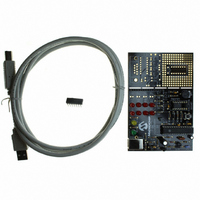DV164101 Microchip Technology, DV164101 Datasheet - Page 53

DV164101
Manufacturer Part Number
DV164101
Description
KIT DEV PICKIT1 FLASH 8/14PIN
Manufacturer
Microchip Technology
Series
PICkit™ 1r
Type
MCUr
Specifications of DV164101
Contents
PIC Kit 1 Circuit Board, CD-ROMs, USB Interface Cable and Booklet
Processor To Be Evaluated
PIC12F675
Interface Type
USB
Silicon Manufacturer
Microchip
Core Architecture
PIC
Core Sub-architecture
PIC12, PIC16
Silicon Core Number
PIC12F, PIC16F
Silicon Family Name
PIC12F6xx, PIC16F6xx
Rohs Compliant
NA
Lead Free Status / RoHS Status
Lead free / RoHS Compliant
For Use With/related Products
Microchip's 8-14 Pin FLASH Microcontrollers
For Use With
AC164122 - BOARD DAUGHT PICTAIL SD/MMC CARDAC164120 - BOARD SIGNAL ANALYSIS PICKIT
Lead Free Status / Rohs Status
Lead free / RoHS Compliant
Other names
DV164101R
DV164101R
DV164101R
Available stocks
Company
Part Number
Manufacturer
Quantity
Price
Company:
Part Number:
DV164101
Manufacturer:
Microchip Technology
Quantity:
135
2004 Microchip Technology Inc.
The fact that the state machine based firmware always returns to the same point in the
code also makes the firmware easier to debug. When a bug is encountered, set a break
point at the jump station. Then, step through the program state by state until the bug is
found. An example of a bug would be the SV being modified incorrectly in one of the
states. If this happens, the wrong state will be called the next time the program flow
returns to the jump station. However, because the SV is being monitored, it will be very
easy to see when an unintentional change is made to the SV and in which state the SV
was incorrectly modified.
Another benefit of state machines is that it naturally promotes modular code. Modular
code has its own list of benefits:
1. Upgrades and special features can be easily added to the code in later revisions
2. Modules can be cut and pasted into other applications quickly and easily.
3. Other developers will be able to understand the code in order to support it. The
C.4.2
C.4.2.1
When implementing a FSM, first brainstorm all the states needed to complete a partic-
ular application. Once this is done, identify the first state. Next, the following question
should be answered: “What needs to happen to exit this state, and what state will it exit
to?” Usually there is more than one answer to this question. Depending on what hap-
pens while in a particular state, the state machine may advance a state, decrement a
state or skip several states entirely. As mentioned before, it is generally a good idea to
visually construct the state machine in the form of a flowchart. Finally, create a software
module for each of the states and tie them together according to the flowchart just
created.
Note:
or as a product evolves.
jump station, if commented well, can be an index to each of the software
modules.
Implementation
GENERAL THOUGHT PROCESS
MPLAB IDE contains a built-in simulator. See the MPLAB IDE v6.xx Quick
Start Guide available on the MPLAB IDE CD-ROM included with the
PICkit 1 Flash Starter Kit
DS40051D-page 49












